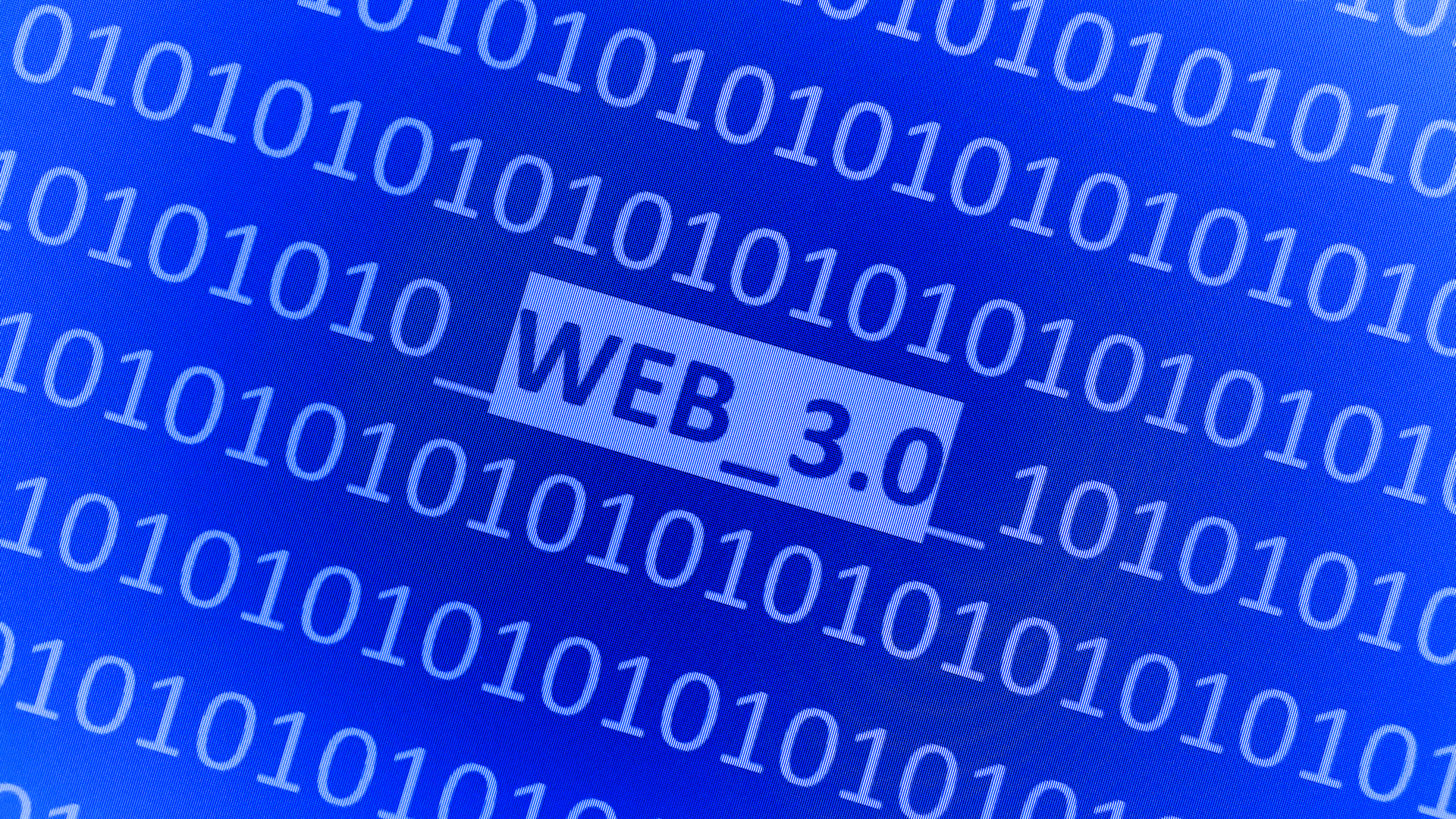What Web 3.0 means for data collection and security
Part 1 of this series looks at the role of IoT and machine learning in the development of a new web experience


In 2001, Tim Berners-Lee released his paper 'The Semantic Web' detailing how the content of the Web could be created and organised to expand meaning. The paper described the Semantic Web as an "environment where software agents roaming from page to page can readily carry out sophisticated tasks for users".
The evolution of the Web has moved through two stages so far. Web 1.0 was basically a set of static pages. The Web we know today is often described as Web 2.0 and is characterised as the age of Google, Facebook and Amazon, where tech giants define the Web that consumers and businesses use every day.
Often heralded as the next evolution of the Web, Web 3.0 moves away from the centralised data archives we have today to a more open and decentralised use of data that embraces the ideas of the blockchain, with data using strong encryption shared on a case-by-case basis.
Defining Web 3.0
Five years after the Semantic Web paper, Tim Berners-Lee said: "People keep asking what Web 3.0 is. I think maybe when you've got an overlay of scalable vector graphics everything rippling and folding and looking misty on Web 2.0 and access to a semantic Web integrated across a huge space of data, you'll have access to an unbelievable data resource."
Bradley Kirkland, CEO of Stone Soup Tech Solutions tells IT Pro that Web 3.0 can be best characterised by its semantic, behavioural and contextual search, curated content, and engaged communication.
"The fundamental difference between Web 2.0 and Web 3.0 is the pervasiveness of data collection and the deliberate actions and decisions based on that data," he explains. "Where Web 2.0 gathered data in existing mediums, Web 3.0 actively and purposefully collects data in whatever context necessary. We go from analysis based on limited sets of data to analysis across sometimes seemingly unrelated data."
It's bringing meaning to the masses of web pages that make up the Web that Web 3.0 promises to deliver. For consumers and businesses alike, this could open a whole new channel where data has value but also a meaning and context that machines can understand. The practical result is better, safer services for everyone.
Get the ITPro daily newsletter
Sign up today and you will receive a free copy of our Future Focus 2025 report - the leading guidance on AI, cybersecurity and other IT challenges as per 700+ senior executives
At the moment, the content on the billions of web pages that constitute the Web we know today has no meaning to the search engines that index their contents. The world's search engines use keywords embedded in each page of each website to surface content to users that may be relevant to the information they want.
In effect, search engines today can't interpret the context of the content they index. For instance, if you search for the word 'focus', today's search engines don't know whether you want information about photography, the science magazine or the car manufactured by Ford. It's a big game of trial and error.
The Semantic Web, however, is designed to provide context and a deeper understanding of each page. Giving the Web intelligence, through the use of emerging machine learning techniques, is the next logical step in its evolution and could open a whole new world of information gathering, exchange and analysis. Marketers will clearly be the first to take advantage of a smarter Web.
Data collection and security
Of course, providing deeper meaning comes at a price. As the Internet of Things (IoT) gathers pace, so too does the magnitude of data collection. This additional data is going to be essential for the development of AI systems, which will refine search results far more accurately. Essentially, although there will be more data floating around the web, most of this will be filtered out.
However, the ways in which the Web has developed to date has placed masses of personal information in the hands of a few large companies, and concerns around this are unlikely to disappear. Personal data security is going to continue to be a major sticking point for businesses and consumers, particularly as attitudes towards the exchange of information for goods and services evolve.
"I cannot say for sure that data security would be enhanced with the open, decentralised networks that Web 3.0 envisages," explains Kevin Curran, professor of cyber security at Ulster University. "There are benefits with regards to security when you move to decentralised architectures, but on the other hand, there are also negatives.
"For instance, a decentralised network can lead to increased robustness, but it also means that data is outside of a more secure centralised service where only one point of entry exists," he adds.
Jake Moore, cyber security specialist at ESET UK believes that Web 3.0 "isn't yet defined" but that it shows that "security must be at the forefront and not an afterthought".
"Web 3.0 can be likened to an artificial intelligence assistant that understands its user and personalises everything," he explains. "But to do this, it needs a plethora of personal data and habits which becomes an ever-increasing treasure trove for criminal hackers.
"The Internet of Things has proven time and time again that security by design is an addition with 'admin' for the password and that's if one is even set. So, when businesses are capturing data to predict a user's thoughts before they have even opened their web browser, this data must be kept in a highly secure vault."
There are clearly risks as well as advantages as the Web becomes more intelligent. Balancing the desire to deliver more meaning to users in a safe environment is a core driver for businesses that understand they must protect the personal data of their customers if they are to maintain trust and their commercial relationships on a smarter Web.
Making a site fit for 3.0
Making the Web more intelligent is inevitable. How data is gathered and used will also radically change as more devices collect valuable information about individuals, their behaviour and their environment.
Zenyk Matchyshyn, CTO at consultancy firm Altran, believes that those businesses who are able to make their services more Web 3.0 oriented early on will solidify their place in a future web ecosystem. He gives the example of an organic food brand, which under Web 3.0 would be able to verify the provenance of its goods and reassure users of its core principles.
"Such brands will be automatically more appealing because the price difference will be based not on the term "organic" in the name but on the detailed history of growing, transporting and handling the food," he explains.
As part of making online services more Web 3.0 orientated, sites will need to ensure they are supporting those interaction methods that customers are favouring, whether that's through voice or even hand gestures.
"Some examples include a consumer waving their hand in front of a 3.0 device to flick through photos or to pause and play music or hovering a finger over a thumbnail of a file to preview it," explains professor Kevin Curran. "Companies also have to think about the semantics of their data they need to build correctly constructed semantic web ontologies and correctly mark-up their products or services, so that they can be discovered more easily."
Ultimately Web 3.0 has many components and defies easy definition. What Web 3.0 will deliver is new ways of collecting and using expanding pools of data. For consumers, the search for information, goods and services from reputable companies will remain, but Web 3.0 will make these tasks faster and more accurate.
In part two of this series, we will consider how Web 3.0 will build on the culture created under GDPR, and how businesses can exploit it
David Howell is a freelance writer, journalist, broadcaster and content creator helping enterprises communicate.
Focussing on business and technology, he has a particular interest in how enterprises are using technology to connect with their customers using AI, VR and mobile innovation.
His work over the past 30 years has appeared in the national press and a diverse range of business and technology publications. You can follow David on LinkedIn.
-
 Should AI PCs be part of your next hardware refresh?
Should AI PCs be part of your next hardware refresh?AI PCs are fast becoming a business staple and a surefire way to future-proof your business
By Bobby Hellard Published
-
 Westcon-Comstor and Vectra AI launch brace of new channel initiatives
Westcon-Comstor and Vectra AI launch brace of new channel initiativesNews Westcon-Comstor and Vectra AI have announced the launch of two new channel growth initiatives focused on the managed security service provider (MSSP) space and AWS Marketplace.
By Daniel Todd Published